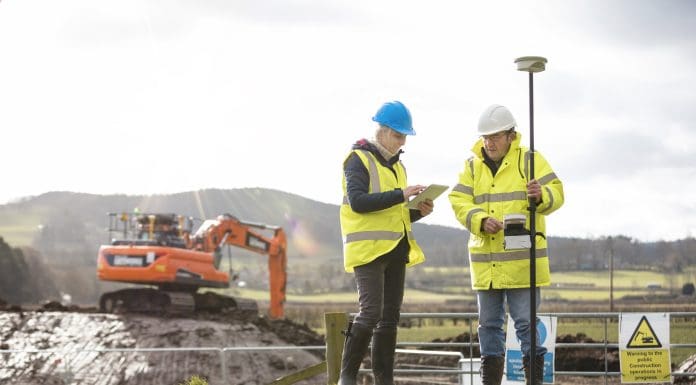The PlaceTech Innovation Lab Report demonstrates how using data, technologies, and workflows in innovative ways can improve decisions within planning, placemaking, infrastructure investment and performance
The Scottish government published the report in collaboration with the Scottish Futures Trust and Ramboll. Architecture and Design Scotland also supported it.
The initiative aimed to give leadership and expertise in data-supported placemaking, including geographic information systems, 3D visualisation techniques, digital twins, and artificial intelligence, in order to address challenges in place-based infrastructure.
The PlaceTech Innovation Lab initiative took place over 12 months
Over the course of the past year, the lab was utilised throughout three sector pilot projects, examining how planning and placemaking decisions can be improved.
The three projects were:
Improving Glasgow City Council’s city centre strategy through digital tools – A digital twin of Glasgow was created to better understand population growth in the city centre, as well as its impact on social infrastructure capacities to help with improved place-making
Enhancing Perth & Kinross Council’s cultural quarter with digital solutions – Insights from data sources were used to develop a strategic town centre investment plan in response to increased numbers of visitors due to the new Perth Museum, influencing future public transport and active travel improvements
Developing a digital model to assess the impact of infrastructure investments for Comhairle nan Eilan Siar (Western Isles Council) – Existing construction pipeline data was used to support the delivery of offshore and onshore renewables, and port improvements.
Placemaking will be an important part of planning reforms
From July to September, the Government ran a public consultation into issues with the NPFF and sought a reformed national planning policy.
Planning is generally considered to be one of, if not the largest hurdle to construction in the UK, with the BCC urging the government to act swiftly in order to open up construction.
Last year, AtkinsRéalis Viral Desai wrote about how planning should focus on place-making and place-based solutions. The planning system has become so complex and difficult to follow that many simply have a ‘tick-box’ culture with no real priorities for the locality.
Desai wrote: “We must look at the natural capital in the area and determine the best way to work with the environment, driving initiatives for net zero and biodiversity that will actually work in a particular landscape and complement the proposed development.
“The lives of communities and the infrastructure, housing, and facilities they need to fulfil their potential must also be properly considered.
“Ultimately, we must determine what we are trying to create in a place, starting with a full analysis of an area and its community and taking the time to work out how we can maximise productivity, quality of life, and environment within the relevant context.”
In accordance with this, the PlaceTech Innovation Lab’s results show that creative use of data to inform place-making may well have a large role to play in future construction projects.
Data-supported place-making “crucial to achieving net zero targets”
Paul Dodd, senior associate director at the Scottish Future Trust and who heads up SFT’s Infrastructure Technology workstream said: “In the current environment of increasing budgetary pressures, the decisions we make today will be crucial to achieving of our net zero targets. The ability to use data in innovative ways will provide increased capability and enhanced insights to improve how we plan, deliver and invest in our places.”
Amanda Chan, digital urbanism lead from the regenerative cities team at Ramboll, said: “Climate change and better place-making is not a data problem, it is a decision making and financial problem. Our cities and places work as a cohesive holistic system, yet data are often treated in silos. As demonstrated from the pilot projects, technologies allow users to efficiently draw insights from data, testing future scenarios and making more informed decisions in planning and place-making.”
Ian Gilzean, head of innovation and digital place at Architecture and Design Scotland, said: “The innovative use of data analytics and digital technology was an important feature of the PlaceTech pilot projects which we can learn from. The pilot projects also demonstrate the benefits of taking a collaborative multi-disciplinary approach to address complex challenges, focusing on place-making and design.”
The post Data-supported placemaking proven effective in Scottish government report appeared first on Planning, Building & Construction Today.


